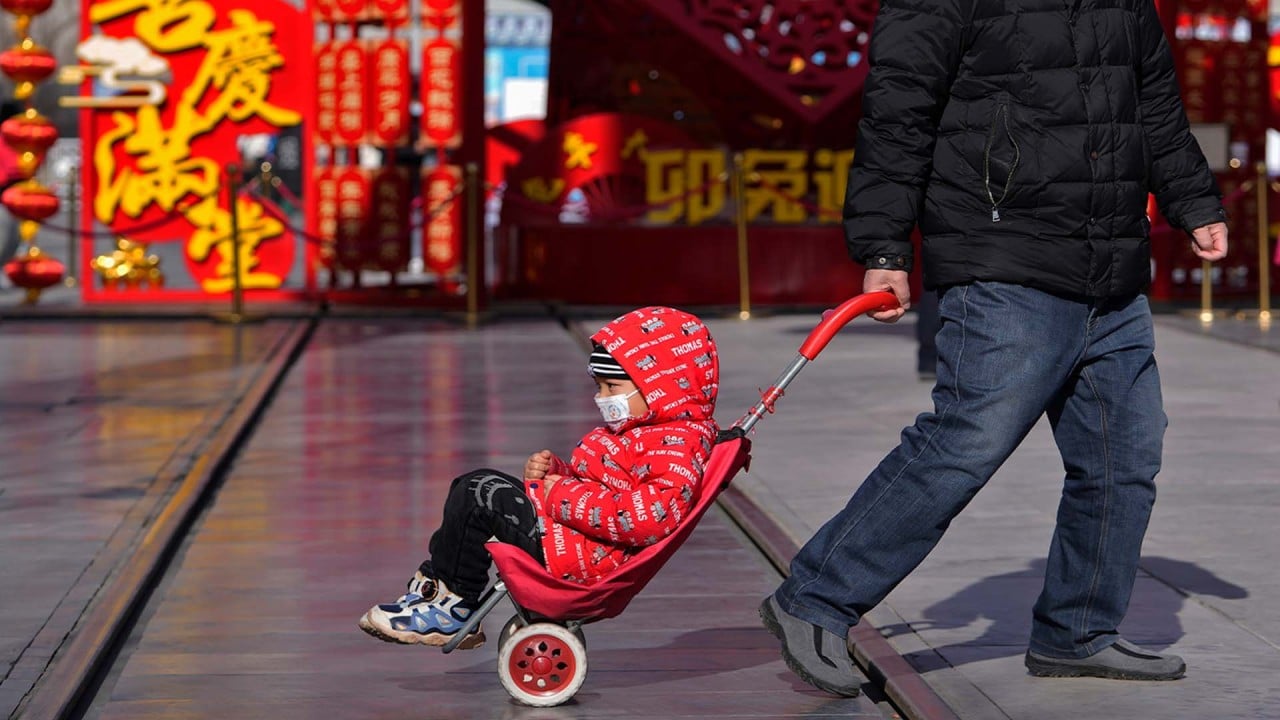
02:14
Chinese reluctant to have children as China reports first population fall in 61 years
China population: raising retirement ages won’t ‘make a big difference’ in workforce size amid demographic crises
- China’s ageing crisis is deepening, with 280.04 million people over 60 years old at the end of 2022, up from 267.36 million people at the end of 2021
- China confirmed early last year that it intends to gradually delay retirement ages from 2025, but doing so ‘would keep relatively few older people in work’
Raising China’s retirement ages will “not make a big difference to the size of the workforce”, according to an analyst, as the country faces up to its demographic crises after its population declined for the first time in six decades last year.
The official data also showed that China’s ageing crisis is deepening, with 280.04 million people aged over 60 at the end of 2022, up from 267.36 million people in 2021 – an increase from 18.9 per cent to 19.8 per cent of the population.
Last year, 209.78 million people were also aged 65 and over, up from 200 million in 2021. The 2022 total accounted for 14.85 per cent of the population, up from 14.16 per cent in 2021.
Raising [retirement ages] would keep relatively few older people in work, since most workers today keep working once they have passed retirement age
“The contraction in China’s population has triggered renewed discussion of what the government could do to counter the demographic drag. One popular suggestion is to lift China’s statutory retirement ages, which are very low,” said Mark Williams, chief Asia economist at Capital Economics.
“But raising them would keep relatively few older people in work, since most workers today keep working once they have passed retirement age. Only a quarter of men drop out of the workforce at that point.
“China’s statutory retirement ages for men and women are low, but raising them would not make a big difference to the size of the workforce.”
China’s working-age population – those between 16 and 59 years old – stood at 875.56 million at the end of 2022, representing 62 per cent of the population, but this was down from 62.5 per cent a year earlier.
7 takeaways from China’s 2022 population figures
“Indeed, despite how low the formal retirement thresholds are, the share of people aged over 65 in paid work is higher in China than it is in other major developed and emerging economies,” Williams said.
“Raising that threshold would allow men to remain in better-paid work, which might support productivity, but it would not make much difference to the size of the workforce.”
The low retirement threshold does appear to contribute to lower employment among women in their fifties in China, Williams added, with about a third of women dropping out of the workforce between their late forties and late fifties, or around twice the drop-off seen in developed economies.
“Raising the labour-force participation of women in their fifties to the developed-country average would boost the workforce by 13 million if nothing else changed,” he said. “But that’s equivalent to only 1.8 per cent of total employment. What’s more, China has relatively high labour-force participation among women in their twenties and thirties, and one reason is that many grandmothers provide childcare.”
The birth rate in China fell to a record low of 6.77 births for every 1,000 people in 2022, down from 7.52 in 2021 and marking the lowest rate since records began in 1949.
High child-rearing costs, shifting ideologies on family and marriages, as well as the slowing economic growth have all been blamed for the population decline.
With fewer workers contributing to the public pension system, and with a growing number of seniors to support, the Chinese Academy of Sciences said in 2019 that China’s urban state pension fund could be out of money by 2035.
“Delaying women’s access to pension benefits is, therefore, not a straightforward means to raise overall employment,” Williams added. “It would make it harder for mothers to work. And it could lead to a further decline in the fertility rate.
“Raising the pension age would reduce the fiscal burden of China’s ageing population, since public pensions start to be paid at the mandatory age, even if someone is still working.
“But raising the pension age wouldn’t make a significant difference to the impact that population ageing is having on the size of the workforce. Indeed, there is a good chance that average retirement ages will fall over the next few decades even if the statutory retirement age is raised, as increasing affluence will leave fewer needing to stay in work past 65.”

.JPG?itok=J8tgfPmW&v=1659948715)